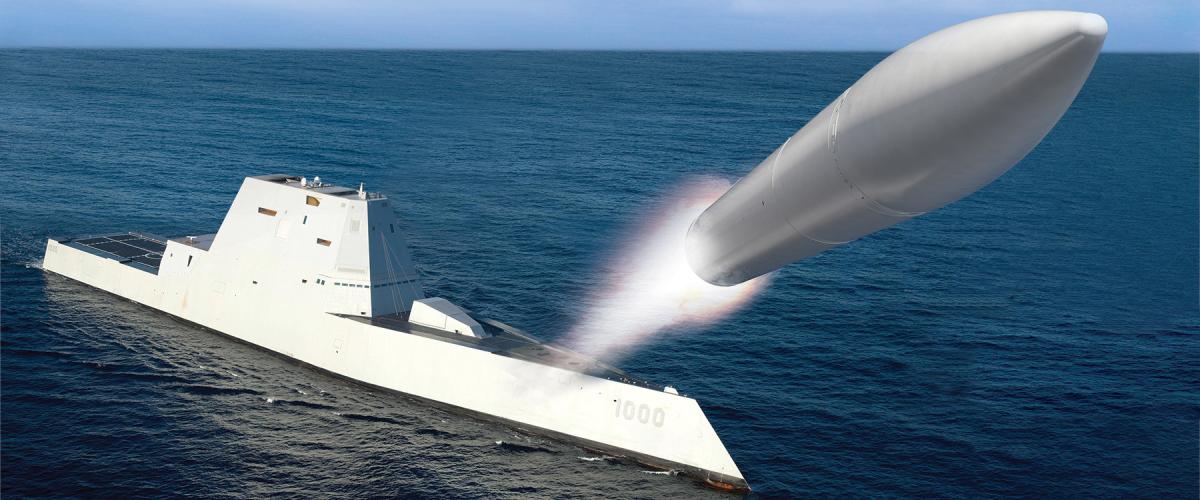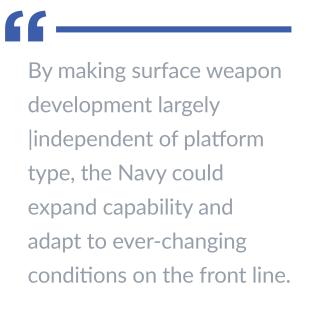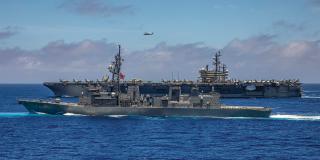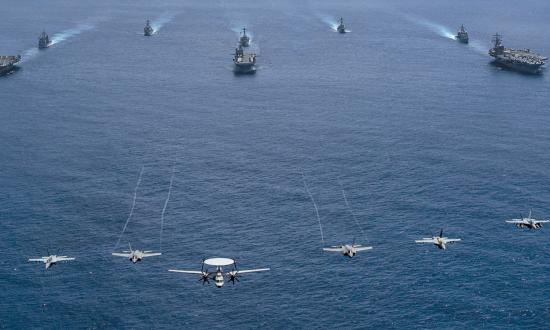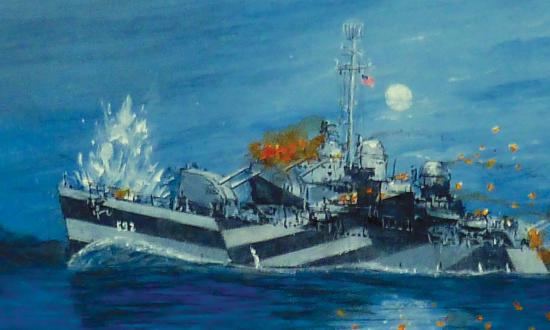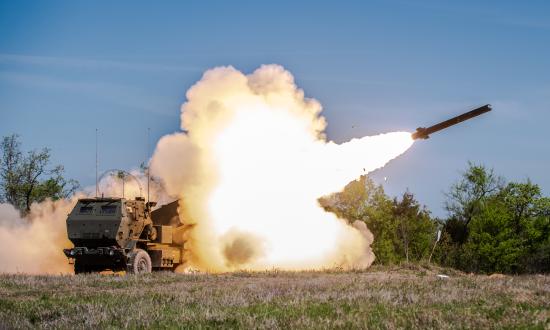The first 60 days of this scenario are eye-opening but realistic—unlike anything the U.S. Navy has experienced since the 1940s. Wartime success in the surface domain will require tactical and technical innovation as well as industrial mobilization. If Trent Hone, Scott Mobley, Mark Wilson, and Arthur Herman have been correct in their writings, then preparing for such a scenario should have started years ago.1
The scenario posits that the People’s Liberation Army (PLA) has preemptively sunk or badly damaged the U.S. Seventh Fleet strike force deployed east of Taiwan. This rueful possibility compels deep thinking on what it would take to meet the readiness challenge for a potential war in 2026. Indeed, with the U.S. Navy survivors having moved east to repair and regroup, what might their assessment be regarding what should have been done years before to get ready?
The Surface Force in 2024
Early losses in the scenario result from the surface navy having failed to effectively adapt in peacetime to changes in technology and operating concepts and its overreliance on exquisite and expensive but low-quantity and relatively short-range capabilities.
Being on the back foot concentrates the mind. Several conclusions emerge regarding which surface domain actions should be taken now to prevent operational rollback and defeat in an increasingly plausible scenario.
Doing more with less is one approach to budget-driven governance, but it is no way to run a global navy facing daunting challenges. This China scenario, in which numbers matter, is stressful enough, but finding the balance between numbers and quality will play a big part in getting the Navy back to readiness for global challenges.
At least since Alfred Thayer Mahan published The Influence of Sea Power upon History, navalists have understood that the fundamental role of the U.S. Navy is to control oceanic movement. This truth is timeless, and if the U.S. Navy does not ensure sea control, then someone else—in this case, China—will.
Movement is important in all naval domains, but, for the surface navy, movement is fundamental. And there is much more to controlling movement than maneuvering for fleet-on-fleet battle. Neither “fleet battle” nor “sea control” appear in the current National Security Strategy or National Defense Strategy, not to mention commerce raiding and blockade; and there is an insufficient mention of them in public Navy thinking. The Secretary of the Navy and the Chief of Naval Operations must make the case for sea control as a driving concept for determining what the Navy needs and why.
The PLAN’s Center of Gravity
In this scenario, the People’s Liberation Army Navy’s (PLAN’s) center of gravity is its ability to control the seas around Taiwan. To do this, it will need its Renhai cruisers and Luyang guided-missile destroyers, some of the most advanced warships in the world and, more important, some of the most heavily armed. They carry a variety of antiship cruise missiles (ASCMs), land-attack cruise missiles, and surface-to-air missiles (SAMs). The PLAN’s ASCMs range two to three times farther than most carried by U.S. destroyers and can fly four to five times as fast.
The PLAN’s submarine force lags its U.S. counterpart significantly in antisubmarine warfare (ASW) proficiency. Therefore, PLAN submarines are primarily used in an antisurface warfare (ASuW) role, armed with long-range ASCMs. These submarines can covertly receive offboard targeting data and wait for U.S. forces to get inside their weapon-release range for a surprise missile attack.
In this scenario, the U.S. surface fleet’s first goal would be to “rollback” PLAN sea control from east to west. The first-phase operational objective would be to allow follow-on forces from the United States, allies, and partners to flow toward Taiwan as part of a broader strategy to regain sea control in the approaches to China. Rollback would require a large number of ships and weapons and support from other Navy warfare communities, the joint force, and allies, all with well-practiced, robust, and resilient command and control and interoperability on a scale not seen at sea since the 1945 Battle of Okinawa.
Surface Domain Challenges and Solutions
With the first sea control phase ongoing, the second operational phase would be to move to the offensive. Given current budgetary and force-structure realities, innovative solutions would be necessary, especially given ongoing rapid changes in the character of war. The surface fleet should consider the realities of the surface domain much more broadly—a domain that would be supported by and support other domains in a struggle to regain sea control and reverse China’s invasion.
Preparing now in earnest, the first primary task would be to enable and train all crews to operate in the most restrictive emissions control posture to disrupt the PLA targeting cycle. This requires cyber and space resources to provide targeting data and other essential information to ships. The Navy’s lack of long-range ASCMs requires cooperative operations with other warfare communities to find small windows of opportunity in which the United States would have a fleeting tactical advantage to destroy PLAN ships. This “small-window” operational deficit in ASCMs reinforces the need for the Navy to use off-ship targeting capabilities while remaining silent to get within weapons-release range of the adversary.
Unfortunately, submarine and cyber warfare—both seen as significant U.S. strengths before the war—would be far less effective than anticipated in this scenario. As with the rest of the “do-more-with-less” Navy, U.S. submarines would be spread thin (see “You Can’t Win without [More] Submarines,” pp. 38-45).
U.S. submarines would be hampered by the PLAN remaining in shallow waters in which acoustic detection is more difficult and by aggressive employment of the People’s Armed Forces Maritime Militia and China Coast Guard to create swarms of noise and deploy ASW nets. If China deploys old merchant ship decoys filled with sand and used as screening escorts, that could cause U.S. ships and submarines to waste their ordnance. In addition, the PLA’s hardened communication networks and use of redundant analog systems would likely diminish the effectiveness of U.S. communications and cyber operations. The U.S. surface fleet must devise operational counters to overcome these diminished expectations for mutual support and integrated connectivity.
Relative Strengths
The Navy’s three Zumwalt-class guided-missile destroyers (DDGs) offer some interesting possibilities. Partnering a pair of Zumwalts with U.S. and Japan Maritime Self-Defense Force (JMDSF) submarines could allow their complementary capabilities to present a significant challenge to the PLAN. The submarines could get close enough to track the Chinese but perhaps not close enough to shoot. Using intermittent “burst” communications, U.S. and Japanese submarines could provide targeting information to the stealthy Zumwalts, which could lurk in the most restrictive emissions control posture northeast and southeast of Taiwan. This would partially mitigate China’s antiaccess/area-denial (A2/AD) capability.
The Zumwalts also could leverage what remained of U.S. national space and cyber assets to refine their targeting solutions. They could target the PLAN’s major combatants with SM-6 antisurface missiles and new hypersonic and other long-range missiles. This tactical concept would cause the PLAN to curtail its own surface operations in the Philippine and South China Seas and provide tactical opportunities for other U.S. forces to exploit.
Joint Forces, Allies, Partners
Everywhere, but especially outside the theater of operations, the surface force would be stretched perilously thin. Western Pacific allies may request support defending their ports and approaches. This would include ballistic-missile defense, which the U.S. Navy lacks the capacity to provide at scale. China and its surrogates could threaten global choke points, including the Panama and Suez canals and the Strait of Malacca. The Pentagon would want to establish a distant blockade to pressure the Chinese economy, but it lacks the ships and logistics to support it. These are just some of the surface force resource constraints the scenario lays bare.
As with Navy ship maintenance and repair, dependence on other navies for sea-lane defense and port security is a force multiplier and is the basis for JMSDF doctrine.2
If the surface force in this scenario is under stress, the logistics force is in much worse shape. There are too few active or contracted ships within Military Sealift Command to provide the logistical support required for a conflict in the western Pacific and little prospect of getting more.3 Even with every warship not in drydock at sea (along with a few that had been laid up only the week before), the logistics force would find it impossible to meet the enormous demand of a great power war. This is another area in which allied and partner nations could help shoulder the burden, but the planning, protocols, and capacity take time to develop—and relying on other nations is a risky substitute for a robust U.S. Navy force structure.
Transitioning from Defense to Offense
The scenario highlights an opportunity to prepare in advance of war. An innovation cell at Surface Force Headquarters in San Diego could be established and led by the U.S. Naval War College’s Halsey Group and Wargaming Department to focus on operational concepts. The Naval Postgraduate School, which focuses on technologies and operations research–driven tactics, also should contribute expertise to the cell. Planning and development support would come from the intelligence community, the naval warfare development centers, federally funded research and development and university-affiliated research centers, naval systems commands, the joint force, and industry. The goal would be to establish a centrally located “surface domain brain trust” to collect lessons from the front lines, develop new concepts, doctrine, and tactics, and advise the U.S. Indo-Pacific Command commander.
The U.S. surface force would need to get on the offensive and take the fight to the PLAN quickly. However, the growing deficit of long-range, active-seeker munitions; lapsed development of new surface warfare munitions; and inadequate planning and operational experience to employ them has diminished the surface navy’s capabilities. During 20 years of ground wars in the Middle East, rather than developing and fielding long-range supersonic ASCMs, the Navy relied heavily on the carrier air wing as a primary means of sinking enemy surface ships, should that have been required.
An effort to transform the surface force has the potential for significant spin-off effects for the Navy as a whole (and, by extension, the joint force). The transition away from a platform-centric model toward a weapon-centric one is key. By making surface weapon development largely independent of platform type, the Navy could expand capability and adapt to ever-changing conditions on the front line—key elements of victory in any conflict.
The most significant challenge for the surface navy is going to be increasing its lethality and range. Most important, the focus should be on proven technology that does not require further integration into the weapons and combat systems of ships, submarines, and aircraft. Five significant points would quickly emerge from the work of such an innovation cell, which would link success in the surface domain with other domains:
The platform becomes secondary to the sensor and weapon. A point was reached in the early 2000s when the most effective surface warfare capability—antiship cruise missiles—became largely platform independent. Despite then-CNO Admiral Jonathan Greenert’s July 2012 Proceedings article “Payloads Over Platforms,” which stated, “We need to move from ‘luxury-car’ platforms—with their built-in capabilities—toward dependable ‘trucks’ that can handle a changing payload selection,” the Navy missed that opportunity. Containerized “packages” of long-range missiles, uncrewed systems, passive sensors, data downlinks from space, and advanced electronic warfare could be carried on virtually any ship (and many aircraft).
The Marine Corps and Army both have been fielding land-based ASCMs—some of them Navy weapons in Navy launchers moved ashore and vehicle mounted—that could be effective against not only PLAN combatants, but also Chinese and Chinese-controlled commercial shipping attempting to resupply forces on Taiwan. Most significant, in the scenario, Marine Corps and Army units are already in the Philippines and the Ryukyu Islands.
Rapid militarization of commercial assets is critical. Although U.S. industry cannot immediately scale production of modern, complex military platforms or weapons, it could rapidly scale innovative militarization of commercial platforms and systems. Boeing 777 commercial aircraft could be modified as tankers and cargo planes and could be used to deploy munitions. Cargo ships, tankers, and cruise liners could be used similarly. Larger companies could be contracted to scale other capabilities as needed. The goal for this rapid militarization would be to find the technologies that could be produced and fielded quickly to gain tactical and operational advantages.
Exquisite platforms are not repairable or replaceable. If the United States could not replace its modern, complex surface platforms quickly, it could buy them from allies and partners. NATO aligned its standards during the Cold War for just this reason, to ensure interoperability and the ability to share munitions. U.S. foreign military sales have populated the world with U.S. weapon systems and platforms. Training Navy sailors to operate and fight with the equipment of others would not be easy but should be achievable within reasonable time horizons.
Offense wins battles, defense prolongs defeat. The Navy’s focus on defense—particularly hard-kill defense—would serve it poorly in the opening engagements of this scenario. Successful offense is the key to victory, and it requires offensive weapons—specifically, long-range antiship weapons fired from aircraft, ships, or submarines. To carry as many offensive weapons as possible, the surface fleet must focus on nonkinetic defenses, such as software-defined jammers that can be modified as enemy capabilities evolve and seeker-blocking obscurants. In particular, effective offense in the surface domain would require the integrated and offboard support of cyber, space, and subsurface capabilities to increase the effectiveness of its weapons.
Network-dependent systems are a warfighting liability. Integration and networking would prove as much a liability as a benefit. Chinese cyber attacks, the physical effects of battle damage, and the inherent frailty of complexity could degrade and cripple many ship systems. Existing and rapidly backfit systems could be network-enhanced for future capabilities, but not be network-dependent per se. This is a different path for the surface force, in which as many critical systems as possible would need manual or analog backups. The challenge is severe enough to call for such deep, disruptive, fleetwide transformation.
While starting to work on these five proposals today is probably still too late for this scenario, these points are still important for today’s planners and commanders. The surface domain must shift to a model of widely dispersed forces operating under mission-command principles, coordinated but not controlled by senior echelons. Communication should be predominantly one way—shore to ships, with only brief ship-to-shore communication to report kills, damage, health, material status, and intentions. Transformation must be doctrinally internalized, with each deploying unit and staff embarking operations researchers to support real-time learning and tactics development.
Begin Transformation Now
Pushed to its initial limits, this transformation would soon see San Antonio–class amphibious transport docks loaded with containerized antiship missiles, strap-on sensors, nonkinetic defense pods, and uncrewed systems operating with similarly configured destroyers and NATO combatants as independent hunter-killers. This would free legacy combatants to defend ports, control choke points, and conduct distant blockade. As U.S. space capabilities are defended, reconstituted, and augmented with commercial assets, stealthy U.S. combatants would lurk until summoned and then take a heavy toll with SM-6 and follow-on ASCMs and SAMs on PLA surface units and aircraft operating outside the first island chain.
Inside the first island chain, uncrewed systems of all sizes would swarm in the air, on the surface, and undersea. They would provide intelligence and targeting, deceive and overwhelm enemy sensors, attack PLAN ships and submarines, and mine port entrances. As well as being offensive platforms in their own right, these uncrewed systems would be critical enablers, allowing Air Force B-1 and B-2 bombers to join the fight and strike the PLAN with long-range antisurface missiles. The Kratos XQ-58 Valkyrie uncrewed combat vehicle, rail-launched from amphibious transport dock and guided-missile destroyer flight decks, has the potential to be particularly effective against the PLA, both at sea and ashore in Taiwan.4
Ships and combat support vessels could be fueled at sea by rafting alongside modified oil tankers and rearmed rafting alongside modified bulk carriers. Modified cruise liners could serve as at-sea repair vessels and provide medical and recovery services for joint force personnel. Ocean tugs and oil platform service vessels could provide search-and-rescue and salvage capability and tow dracone barges full of fuel, cargo, and munitions for transfer to fishing boats that would take them ashore to support expeditionary advanced base operations.
Farther removed, aircraft carriers and large-deck amphibious ships could serve as lily pads and mother ships for long-range uncrewed systems. They also could serve as logistics, maintenance, and repair hubs, transferring essential repair parts for delivery to the forward operating units by flying boats provided by Japan and U.S. European allies.
These are hard times that will require immense effort and great investment. Fleet Admiral Ernest King famously said, “Nothing remains static in war or military weapons, and it is consequently often dangerous to rely on courses suggested by apparent similarities in the past.” Admittedly, some of these proposals are aspirational. But while today’s Navy is not ready to fight this scenario, perhaps it is ready to get ready.
Success in the surface domain would be key to shifting to the offense and carrying the fight to China. To get there, surface force transformation is essential. Such a transformation from current practices and preferences will not come easily. It requires deep introspection from the Navy—supported by innovative U.S. industry partners, the joint force, and allies—to enable sea control, without which victory in the Indo-Pacific will not be possible.
1. Trent Hone, Learning War: The Evolution of Fighting Doctrine in the U.S. Navy, 1898–1945 (Annapolis, MD: Naval Institute Press, 2018); Scott Mobley, Progressives in Navy Blue: Maritime Strategy, American Empire, and the Transformation of U.S. Naval Identity, 1873–1898 (Annapolis, MD: Naval Institute Press, 2018); Mark R. Wilson, Destructive Creation: American Business and the Winning of World War II (Philadelphia: University of Pennsylvania Press, 2016); and Arthur Herman, Freedom’s Forge: How American Business Produced Victory in World War II (New York: Random House, 2012).
2. That the JMSDF surface fleet is the Fleet Escort Force speaks volumes in this regard.
3. Ben Werner, “Report: U.S. Sealift Lacks Personnel, Hulls, National Strategy,” USNI News, 14 February 2020.
4. U.S. Marine Corps, “Marine Corps XQ-58A Valkyrie Completes First Flight,” press release, 5 October 2023. The Valkyrie is an experimental, stealthy, uncrewed combat aerial vehicle built by Kratos.



